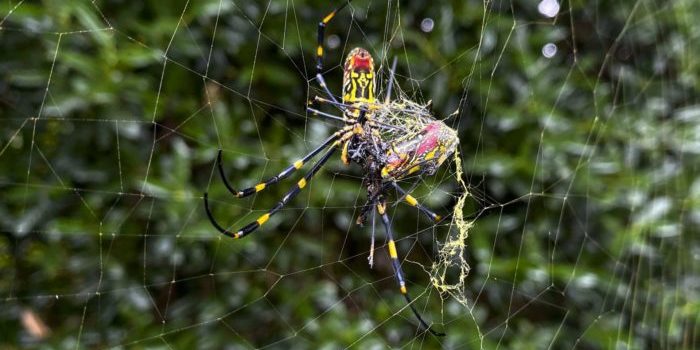(Molly Bruns, Headline USA) From inflation to immigration, Americans living in the Biden era may think they have enough on their plates to worry about.
But it turns out Mother Nature has other plans, adding a new nightmare to the BINGO cards of those living on the Eastern seaboard—and quickly spreading to other parts of the country.
Scientists reported recently on Trichonephila clavata—a species of large, flying, invasive spiders, also known as Joro spiders—that has been spreading throughout the southeastern U.S. since around 2010, according to CBS News.
Native to East Asian countries such as Japan, Korea, Taiwan and China, ecologists suspect the spiders immigrated to the U.S. via cargo ships.
Scientists originally discovered the spiders in Georgia in 2014, but they have since continued to spread to Alabama, Maryland, North Carolina, Oklahoma, South Carolina, Tennessee and West Virginia.
Joro spiders are anticipated to migrate as far north as New York state, but no residents reported sightings yet.
“As of right now, I haven’t seen any additional records north of Maryland, but that’s something to keep an eye on,” said Jose Ramirez–Garofalo, an ecologist at Rutgers University. “It’s a matter of when, not if.”
Dave Coyle, assistant professor at Clemson University, started studying the spiders upon their discovery stateside in 2014.
“It seems extremely likely that they will have no problem expanding to the whole eastern half of the country,” he said.
Joro spiders are sometimes called parachuting spiders because the small ones shoot long strands of silk that gets caught by the wind, carrying them in the air—a technique known as ballooning.
While the spiders do have some venom, Coyle said there is no evidence of them doing any harm to humans or domestic animals.
Coyle did say that areas with high populations of Joro spiders had lower populations of native spiders.
“That to me is a very distinct ecological impact,” he said.
Joro spiders are large, with some people reporting spiders up to 8 inches in length.
They are also cold tolerant and tough enough to migrate between the northern and southern United States.
Officials encouraged people to squash Joro spiders, as they are an invasive species with a significant impact on other local species of spiders and bugs.
However, scientists were not optimistic about the chances of removing the spiders from America’s ecological landscape.
“It looks like Joro spiders are not going to shy away from building a web under a stoplight or an area where you wouldn’t imagine a spider to be,” said Alexa Schultz, co-author of a study into the arachnids. “I don’t know how happy people are going to be about it, but I think the spiders are here to stay.”

